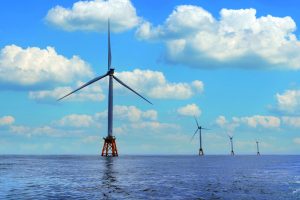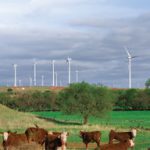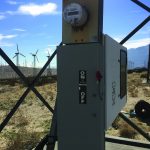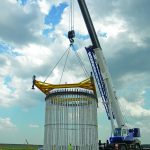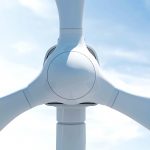Steel-to-steel contact is why many bearings fail, why proper lubrication is critical, and why The Timken Company, manufacturer of engineered bearings and power transmission components, works hard to develop advanced surface coatings that combat the problem in the toughest conditions.
To extend the life of roller bearings operating in wind turbines, Timken developed ES302, a special coating that adds durability where adhesive wear (the rubbing together of two metal surfaces) is a significant problem. Follow along as Timken bearing experts Vikram Bedekar and Doug Lucas explore the science behind this proprietary surface treatment that has been proven to prevent common damage modes in wind bearings.
Stronger Bearings Wanted
Wind turbines place huge demands on mainshaft and gearbox bearings as many wind-farm operators already know, having experienced the disruption of a major mechanical overhaul that can cost $100,000 or more anytime a bearing is unexpectedly taken out of service.
By the late 2000s, with bearing failures mounting, the U.S. wind-energy industry began to widely recognize that turbines designed to produce electricity for 20 years were requiring large corrective work within five to 10 years. Early wind-turbine designs, for instance, tended to use two-row mainshaft spherical roller bearings that, due to the dynamic loading forces commonly experienced in turbines, were required to support a radial reaction as well as wind-thrust loading on only the downwind row of rollers.
This uneven pressure led to premature mainshaft bearing wear while also transferring damaging axial deflection loads to gearbox bearings. Furthermore, wind-energy producers found it challenging to keep bearings well-lubricated under these complex loading conditions. In wind turbines, lubricant films are particularly difficult to maintain, and bearing damage can occur quickly. As years passed, the urgency for wear-resistant bearing solutions grew stronger as turbine operators looked for answers.
Advancing Wind Energy
Timken has been committed to the wind industry for nearly 20 years with dedicated research and development, engineering, and field service teams actively engaged in solving the industry’s biggest challenges. By 2009, the Timken R&D team was nearing the production stage on a special plasma coating process for roller bearings that it had been pioneering since the late 1990s.
At that time, physical vapor deposition — or PVD — was a technology unfamiliar to most. PVD is a vacuum deposition method used to produce thin films on objects such as bearing rollers, gears, and engine components. Previously, Timken had demonstrated promising results for PVD-coated bearings in various oil and gas, mining, military and pump drive applications and saw an opportunity to help wind producers increase their productivity by bringing the same surface engineering technology to turbine mainshaft and gearbox bearings.
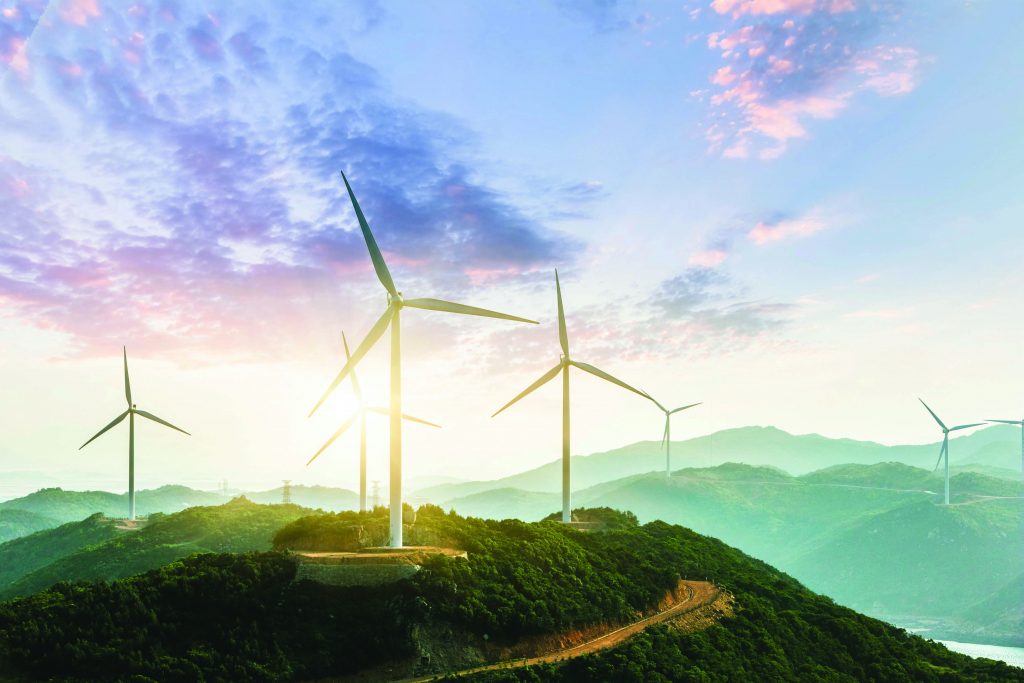
About PVD
PVD uses physical processes such as heating, sputtering, or transfer by laser or electron beams to produce a vapor of material, which is then deposited on the object that requires coating. This highly complex process is a rigorous one that must be controlled within world-class production facilities and with stringent design and quality specifications. For wind bearings, Timken chose a plasma-based PVD sputtering method whereby atoms are ejected from a source material (the target) by high-energy particles and transferred to a substrate.
First, bearing rollers are placed in a chamber in a vacuum environment and introduced to very low quantities of a special mixture of reactive gases (Ar/C2H2). These gases react with the metallic targets (such as WC) in the presence of strong electric and magnetic fields. The atoms from the target are then dislodged by high-energy collisions (that is, plasma ions bombard the source material, causing some of it to ionize). These ionized atoms then condense on the surface of the object in microthin layers.
PVD coatings are more uniform, more durable (up to six times) than conventional electroplated or spray coatings. PVD is also considered to be a more environmentally friendly process as it does not produce any hazardous waste materials to dispose of.
Once confined to special laboratories, PVD methods have been scaled up in recent years to meet the needs of heavy industry, with ongoing development allowing the production of new coatings with properties that were previously unachievable.
Essentially, PVD methods allow coatings to be deposited on surfaces atom by atom. This precise, nanometer control of the coating structure allows Timken to create coatings that possess the exact performance characteristics an application requires. This level of accuracy and consistency is simply not achievable using a traditional bath dip or spray-paint process. The result is a fabrication of atomic layers having the exact microstructure and properties desired.
Solving for Steel-on-Steel
By employing PVD coating technology to make roller surface less “steel-like” than the bearing rings, Timken theorized it could effectively combat the steel-on-steel adhesive wear issues plaguing turbine mainshaft and gearbox bearings.
The coating Timken developed — dubbed ES302 — is a super-thin engineered combination of nanometer-sized ceramic particles embedded in an amorphous hydrocarbon matrix measured in fractions of a human hair. The coating’s nanocomposite, metal-carbide matrix design provides extremely hard and low-friction, near-surface properties that inhibit microwelding and adhesive wear at the roller and race interfaces.
Essentially, ES302 is both hard and wear-resistant like a drill bit, yet slippery and nonstick like a frying pan. When applied to bearing rollers, the coated surface acts as dissimilar material to the steel rings to reduce adhesive wear. Such coatings have proven effective in low-lubrication conditions or where debris is present, offering a wide range of advantages in heavy-duty bearing applications. Benefits can include reduced friction and torque, reduced component scuffing and smearing damage, decreased false-brinelling wear, and greater oil-out protection.

Excitement for ES302
During ES302 development, Timken experts traveled the world to talk to wind-farm operators, OEMs, and others about the problems they were experiencing. This direct customer contact was key to uncovering real-world challenges, building collaborative relationships, and gathering extensive feedback on wear-resistant bearings. In 2011, Timken began sending prototype parts out for evaluation and received promising reports in return. In one instance, a bearing that had previously lasted just 200 hours was documented to have crossed the 2,000-hour threshold with no disruptions, prompting an enthusiastic email from the customer.
At the same time, Timken conducted laboratory testing that indicated an ES302-coated bearing could experience up to six times greater life when operated in standard conditions, and up to three times greater life under debris-contaminated conditions compared to an uncoated bearing.
The company soon established a healthy aftermarket strategy of replacing standard mainshaft and gearbox bearings with wear-resistant bearings featuring ES302 coating on the rollers. Furthermore, the new coating was showing promise in agricultural applications such as large farming implements, tractors and combines. Timken aerospace customers also found uses for ES302, along with paper mills and cement plants where high temperatures, water ingress, and abrasive particles pose a constant threat to bearings.
Ultimately, the investment by Timken to identify fundamental problems in customers’ applications and to work on the cutting edge of engineering and scientific knowledge to solve them is what spurred the success of the ES302 project. As materials and processes shift over time, it is a collaborative mindset that keeps Timken focused on the problems customers care most about.
Award-Winning Innovation
Since commercializing its proprietary coating, Timken has garnered widespread industry acclaim including the prestigious Engineering Materials Achievement Award from ASM International in 2017. The pre-eminent materials information society recognized Timken for ES302’s “significant contributions to the field of materials science and evidence of industrial impact.” Previous winners of the annual award, established in 1969, include General Electric Co., Northrop Grumman, IBM, Boeing and General Motors Corp., to name a few.
For Timken development team members, the honor brought home a broader sense of how much their customers and technical peers appreciated the work that went into developing ES302. Many Timken engineers and analysts made valuable contributions to the project, including Gary Doll, Timken professor of surface engineering and director of the Timken Engineered Surfaces Laboratory at the University of Akron; Ryan Evans, director of R&D for bearings; Jim Gnagy, product development specialist; and Tim Springer, program manager.
Field-Proven Performance
Recently Timken was presented an opportunity to reinforce its initial lab results when one 230/600-series ES302-coated mainshaft bearing was removed from a 1.5-MW turbine in New Mexico (due to nonbearing-related issues) and returned for analysis following seven years of reliable service. Because the turbine was planned to be repowered, the operator didn’t relubricate the bearings for the last two years of operation.
A close examination showed that the bearing exhibited little to no adhesive wear, and it demonstrated the expected surface finish and remained consistent with the original design profile, leading Timken to conclude the bearing was in “very good” condition for this stage of operation and the lack of relubrication for two years. Furthermore, there was no evidence of the bearing entering the next stages of damage. Based on its own application engineering practices, Timken can confidently estimate the bearing would have continued to provide reliable, trouble-free operation into the 15- to 20-year time frame.
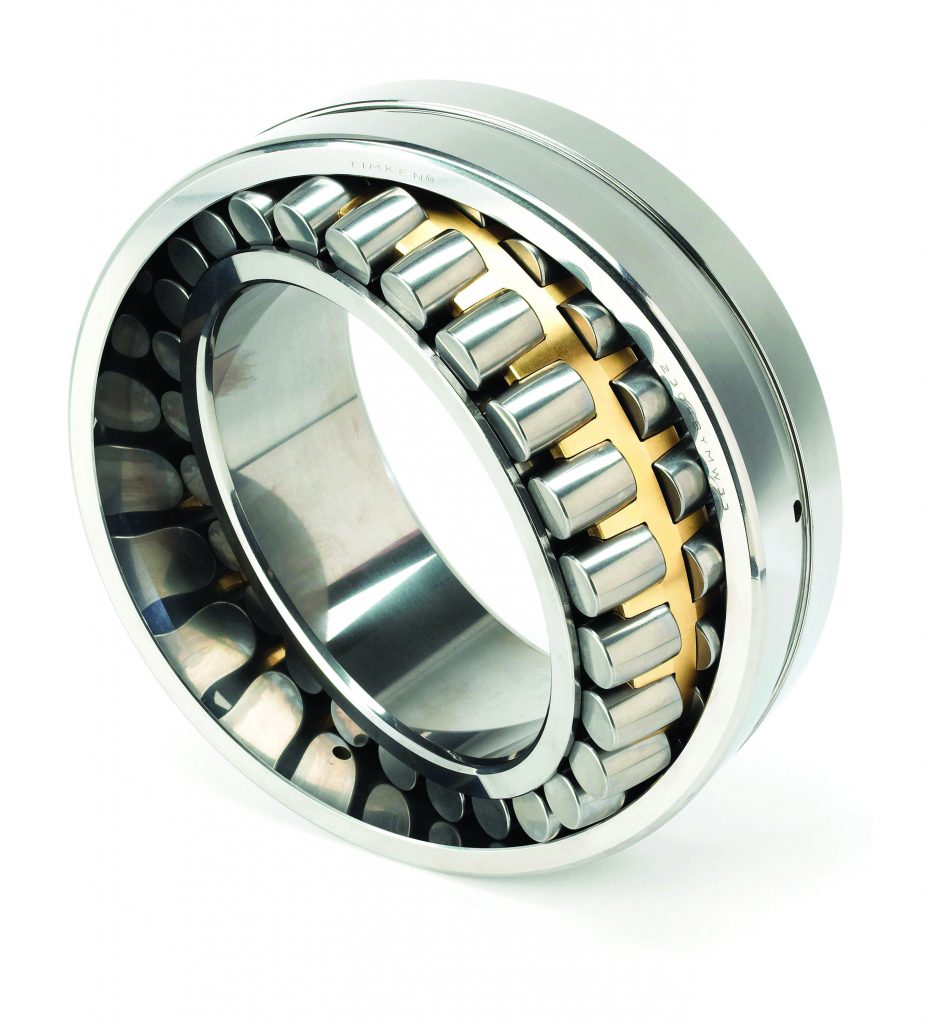
The Power Behind the Power
Currently there are more than 1,000 ES302-coated bearings installed in wind turbines around the world. According to the American Wind Energy Association (AWEA), U.S. wind power alone now supports a record 114,000 jobs, more than 500 domestic factories and more than $1 billion a year in revenue for states and communities hosting wind farms. With the ability to power more than 30 million homes, the industry is bringing economic opportunities to towns and cities across America.
Timken is proud to play its part in helping to grow renewable energy technologies by producing wear-resistant bearings that customers do not have to think about again. ES302 and other surface engineering developments from Timken help bearings do their jobs dependably wherever rotating parts require them.
Today, Timken researchers continue to look for ways to reduce costs and make coatings more accessible to a wider variety of customer applications. By partnering with energy producers, OEMs, and centers of excellence worldwide, the company is delivering on its mission to engineer the next generation of coating technologies that improve bearing life and eliminate downtime.
How Bearing Damage Occurs
In a standard mainshaft spherical roller bearing, radial and thrust forces result in higher loads on the downwind row of the bearing, as well as a full 360-degree loaded arc of rollers.
For every shaft revolution, the full-loaded arc of rollers increases the number of stress cycles occurring on a point on the inner raceway of the bearing.
Given that a mainshaft typically rotates at slow speeds in the 25 to 35 rpm range, this may not generate a significant lubricant film, even with higher-viscosity lubricants.
Taken together, the result is greater loading, more stress cycles, and thinner lubricant film thickness on the downwind row of the bearing, which increases the risk of micropitting and other damage modes.



















